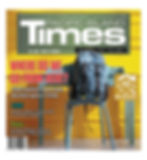The 'Art' of statistics: How my hate of numbers has turned to love
- By Theodore Lewis
- May 11, 2025
- 4 min read
Updated: May 15, 2025


Bridgman, MI—Throughout my school years, I hated the study of numbers. Statistics, Algebra and math in general—I thought I had no use for them. My disdain for statistics was as great as my disdain for lima beans and garbanzo beans that my mother tried, unsuccessfully, to get me to eat.
Back then, the only things I found statistics useful for were the batting averages of my hero Al Kaline, and the percentage of home runs Gates Brown would hit as a pinch hitter for the Detroit Tigers.
Years later, one man changed my whole outlook on statistics. When Bob Willett, the CEO of Kettering Medical Center in Dayton, OH, started mentoring me for my future as a healthcare executive, he assigned me to the Planning Department at Kettering to work under Art Caviness, the vice president of planning, who loved numbers.
When our department secretary, Diana, printed out the latest reports showing admissions at the hospital, Art would call me into his office excitedly to show me how to analyze the change in numbers. What was most important was not the actual one-time occurrence of a number but the percentage change in a number from one period to the next. The trend line of percentage change could indicate a danger or opportunity that would not be evident from just looking at one set of numbers.
Art got excited like a kid in a candy store each time we received the report for monthly, quarterly and annual admissions from other hospitals. He would quickly figure out the percent of market share we had for some time and then map out the trend line that was occurring of that percentage, either up or down.
I started working for Art in 1982 when the U.S. government developed the Diagnostic Related Groups system, which classified hospital admissions into one of 467 groups to develop a standardized reimbursement system. The 467 DRGs were then summarized into 25 diagnosis-related categories. The purpose of the DRG system was to move U.S. hospitals away from cost-based reimbursement to a flat rate that would take into account the average clinical length of stay and average resources utilized over a large number of hospitals for a particular DRG.
The use of numbers and analysis of DRG-related statistics became very important to the financial outcomes of a hospital and Art quickly became an expert in understanding them. He taught me how to analyze the stats in a way that could be useful to the organization and for presentations to the hospital's executive team. Art taught me the fundamental tools related to studying hospital statistics, which increased my opportunity for success as a hospital executive.
Thanks to Art's tutorials, I learned to evaluate numbers as they related to health care and other aspects of life.
Art also introduced me to “The Statistical Abstract of the United States,” an annual publication produced by the U.S. Census Bureau from 1878 to 2012. It had statistics on everything, such as manufacturing, agriculture, healthcare, demographic data and everything in between.
Shortly after moving from Kettering to the Washington D.C. area, I learned that “The Statistical Abstract” was printed by the U.S. Government Printing Office and sold in their bookstore on North Capitol Street. Going to the bookstore to obtain a copy of the latest edition became an annual pilgrimage for me. I would look forward to this annual visit with as much enthusiasm as my annual visit to see the gorgeous azaleas at the National Arboretum in D.C.
These books became my bible for everything related to statistics and for many years I was unwilling to part with them, keeping them in several boxes in my basement or in storage. Although the government does not produce this book anymore, it is still being published by ProQuest.
When I went to Maine as CEO of Parkview Hospital, the hospital was struggling financially and on the verge of being shut down. After surviving miraculously from its initial crisis, I knew that some fundamental improvements were needed if the hospital were to remain viable.
The value of Art teaching me to love statistics had its greatest outcome when I got hold of the Maine Hospital Association's annual publication on Maine Hospital Statistics.
The Maine Hospital Association produces valuable statistical reports for its members, which I began to devour during my first month on the job.
Based on the skill Art had taught me, I went to the MHA statistical report page showing the “Net Revenue Per Adjusted Discharge” statistics for each hospital in the state. While the numbers for each hospital were ranked alphabetically, I looked at the average and the median and was shocked to see that Parkview had the lowest number of any hospital in the state.
This statistic showed me that there was hope for the hospital. Wing Choi was then hired as Parkview's CFO. He and his team, over the next couple of years, were able to get the hospital's Net Revenue Per Adjusted Discharge up to the median of Maine hospitals from the previous position at the bottom, and thus the hospital had enough revenue to successfully provide service for many more years.
I'm forever grateful to Art Caviness for teaching me to love statistics. While my hate of statistics has turned to love, I still won't touch those lima beans and garbanzos.
Subscribe to
our digital
monthly edition





